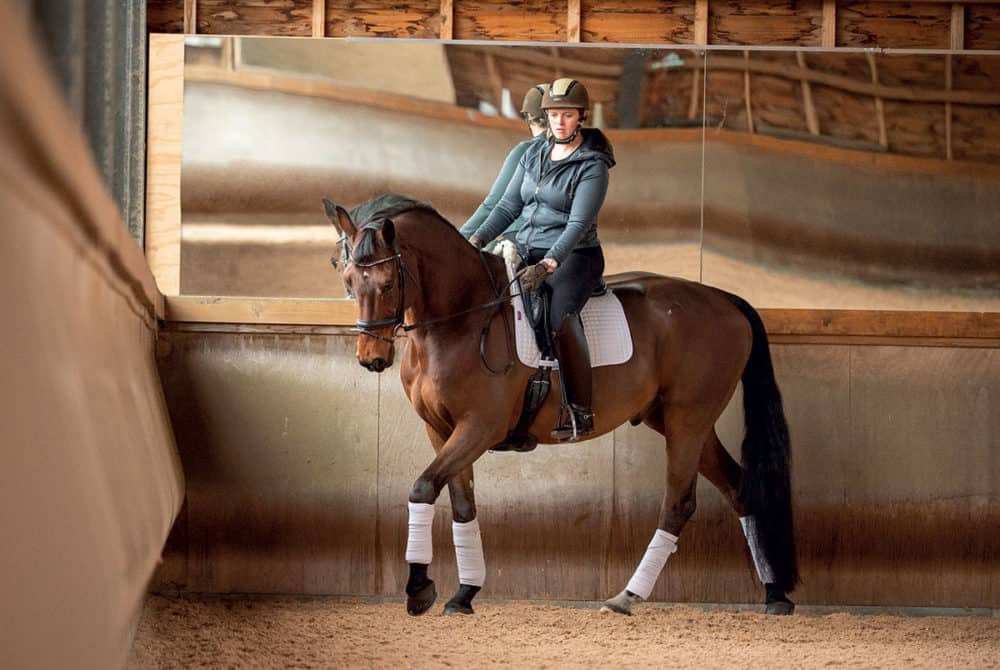Workshop with Grand prix dressage rider Sarah Higgins
Posted 8th September 2021
When was the last time you showed your horse’s walk some TLC? Dressage rider Sarah Higgins shares her top techniques to take his walk from woeful to wonderful

Did you know that your walk work is worth at least 30 marks in every dressage test you ride? With that in mind, it perhaps deserves more of your training time than you thought. You walk your horse every time you ride – in the arena and outside of it – so why not use that time productively to boost your scores?
A personal bugbear for me is an ambling, lacklustre walk. All your horse’s paces should have energy and purpose, so that’s a great place to start. Stick with me and I’ll show you how to level up his walk even further with five of my most fail-safe tips.
Not just a break
One of the most important things to remember is that it’s never just walking. It doesn’t matter if it’s free, medium, collected or extended, if your horse is walking in any kind of contact always treat it as a movement in its own right, and ride it at home as though you’re being marked. This helps you set a distinct boundary between a walk and a break.
When giving my horses a breather, I remove any suggestion of contact so that they understand that they’re taking a moment to themselves. This way, when I get to a competition and it’s time to do my free walk, my horses feel the contact and, despite having a longer rein, don’t see it as a free pass to down tools.
Get him reaching
The level of activity required for a swinging extended walk requires your horse to be supple throughout his body. Stuffy or tense horses struggle with this, so I like to use lateral work to encourage free muscles and produce a greater degree of throughness. Here’s how…
- Establish medium walk – it can help to condense his strides to make it closer to a collected walk to give you more control if you need it, just don’t allow the tempo to slow.
- Leg-yield away from the three-quarter line towards the outside track. To do this, ask for slight poll flexion away from the direction of movement and use your inside leg behind the girth to ask your horse to move over. Your outside aids control the tempo and help his body stay parallel to the arena wall.
- Once you reach the track, the lateral movement should have helped free up his body. Now ride straight, squeezing him forward with your leg and following his nose down and out with your hands while keeping your shoulders and eyes up.
Did you know?
Many riders assume collected walk is slower than medium, but it actually has a faster tempo due to the shorter steps, so your leg is even more crucial in maintaining energy and rhythm.
To find out more ways to get your horse’s walk mastered for dressage, pick up a copy of November Horse&Rider, on sale 9 September 2021










